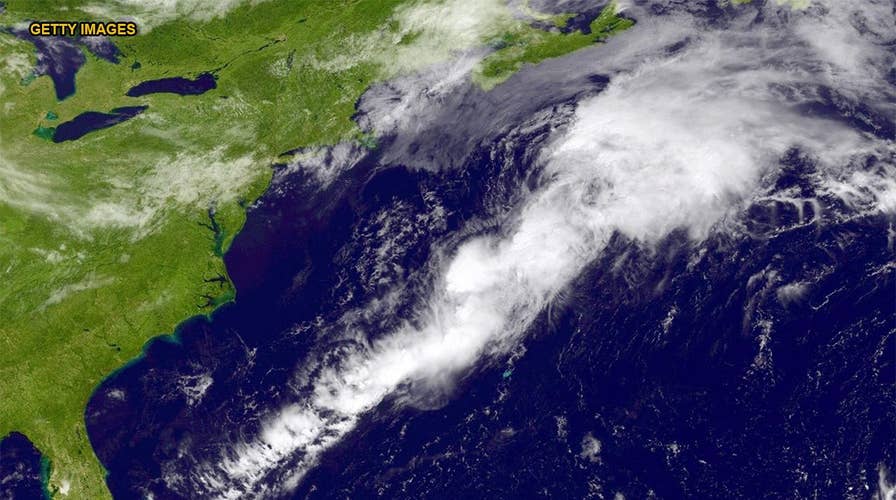Scientists discover world's largest freshwater aquifer underneath the ocean floor
Surveying the sub-seafloor off the eastern coast of the United States, researchers at Columbia University uncovered what appears to be the world's largest freshwater aquifer. Believed to hold at least 670 cubic miles of fresh water, the discovery could usher in similar discoveries for other regions throughout the world.
For the first time since beginning to make maps more than a century ago, the National Geographic Society said it would recognize the Southern Ocean as the world's fifth ocean.
The nonprofit has previously recognized four oceans: the Atlantic, Pacific, Indian and Arctic.
The Southern Ocean, which surrounds Antarctica, has long been recognized by scientists, but the society's geographer Alex Tait said in an article announcing the decision that because there was never an international consensus, the National Geographic Society had never officially recognized it.
"I am excited we are taking the step to officially recognize the Southern Ocean as the world's fifth ocean," Tait said in an email to Fox News on Thursday. "There is, of course, one interconnected world ocean but it does have regions. Traditionally there have been four regions but the waters around Antarctica form a fifth unique area."
90% OF SHARKS MYSTERIOUSLY WIPED OUT NEARLY 20 MILLION YEARS AGO: RESEARCHERS
According to the article, cartographers had deliberated over whether the waters were merely extensions of the Pacific, Atlantic and Indian oceans.
Did the frigid body of water have enough defining features to make it an official ocean?
National Geographic says that the Southern Ocean is defined by an approximately 34-million-year-old current called the Antarctic Circumpolar Current (ACC).
The waters inside the ACC, which flows from west to east, are reportedly colder and less salty than northern ocean waters.
The ACC also transports more water than any other ocean current, drawing in waters from the Atlantic, Pacific and Indian oceans and energizing a global circulation system known as the "conveyor belt."
The constantly moving system of deep-ocean circulation transports heat around the world, according to the National Oceanic and Atmospheric Administration (NOAA).
In addition, National Geographic noted that cold and dense water that drops to Antarctica's ocean floor helps to store carbon – a factor in climate – and that water moving through the ACC is warming.
"We chose to update our Map Policy to identify the Southern Ocean primarily due to its distinct ecological characteristics. This includes the circumpolar currents and winds that isolate Antarctica, the temperature and salinity gradients, and the area's resulting influence on Earth's climate," Tait said, noting that bringing attention to the oceans is an "important part of geography education."
Another factor to the announcement is the ocean's "ecologically distinct" environment, with unique marine ecosystems currently under the threat of industrial fishing.
"By drawing attention to the Southern Ocean, the National Geographic Society hopes to promote its conservation," the publication said.
"We hope that by recognizing the Southern Ocean as the earth's fifth ocean will draw attention to the unique protections urgently needed in this region. This includes but is not limited to its unique and fragile marine ecosystems that are home to magnificent marine life such as whales, penguins, seals, and fish species," Tait . "As climate changes we need to provide protected areas in all the ocean's regions, including the Southern Ocean."

ANTARCTICA, FEBRUARY 2016: Stunning icebergs the size of small countries threaten to collapse, taken in February 2016, Antarctica. (Credit: Freedive Antarctica / Barcroft M / Barcroft Media via Getty Images)
Oceans, comprised of saltwater, cover more than 70% of Earth and an estimated 97% of the planet's water is found in the ocean.
To date, more than 80% of the world's ocean has never been mapped or explored.
While the National Geographic Society has been updating its maps for decades, large revisions are uncommon and, generally, the maps follow the International Hydrographic Organization's (IHO) guidance on marine names.
CLICK HERE FOR THE FOX NEWS APP
While the IHO – which works with the United Nations Group of Experts on Geographical Names – recognized the Southern Ocean in 1937, it reversed course in 1953.
Conversely, the U.S. Board on Geographic Names has used the name since 1999.
In February, NOAA officially recognized the Southern Ocean as well.

